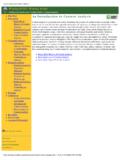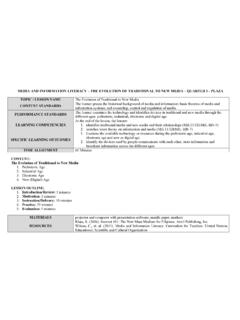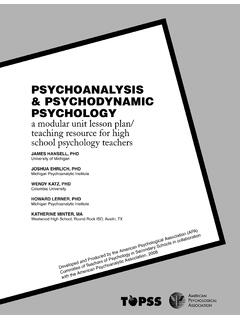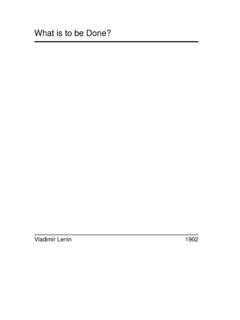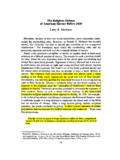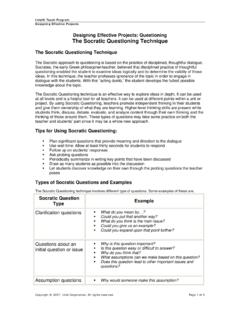Transcription of The origin, purpose, values and limitations (OPVL) of ...
1 The origin, purpose, values and limitations (OPVL) of historical sources Question 3 of Paper 1 for both SL and HL, as well as section C of your historical investigation will require you to evaluate the origin, purpose, values and limitations of two historical yourself the following questions: Who wrote/drew/said the source? When did they write/say/draw it? Where did they write/say/draw it? What is the source? (a speech, cartoon, textbook, )PurposeAsk yourself the following questions: Why did they write/say/draw it? For whom did they write/say/draw it? values and limitationsSourceValuesLimitationsPrivat e letters - The audience is the recipientDiaries- The audience is personal, not public at the time of writing- Can offer insight into personal views and Can indicate effects of an event or era on an Can suggest motives for public actions and Only gives an individual opinion, not a general view or government The writer may change opinion due to later May give a view not held in In a letter.
2 The motive might be to persuade the audience to act in a certain To be published for a public audience- Can offer insight into personal views and Can suggest motives for public actions and Might benefit from hindsight (an evaluation of events after the Might show how the individual wants his or her motive and actions to be viewed by the The writer may revise opinions with the benefit of hindsight, not that the consequences of actions are known. The writer might want to highlight the strengths of his actions, to improve his public image or his , Poems- Could inform on contemporary Can offer insight into emotional responses and motive- Could be a dissenting voice (not popular opinion))
3 - Could exaggerate the importance of an event or individual- Could have a political agendaSourceValuesLimitationsNewspapersT elevision and radio reportsEyewitness accounts- Can give publicly held views or popular Might offer an expert's Can give insight on contemporary Could be politically influenced or could be censored by specific governments or Might only give an overview of the Might only give a narrow, one-sided Might emphasize only a minor part of an Note: eyewitness accounts are not useful just because they are at an event. Each eyewitness will notice different aspects and may miss key points Can offer insights, for example, into economic growth and Might suggest correlations between indicators like unemployment and voting Makes analysis or results over time Makes comparison The purpose of gathering particular statistics needs considering.
4 (could be political, economic or deliberately distorted)- Could relate only to one location or time Correlations might be wrong. (there could be another causal factor not included in the statistics)Photographs- Can give sense of a specific scene or Can offer insight into immediate response to or impact of an event on particular people or Might offer information on the environment where an event took Cannot see beyond the lens - The limited view might distort the bigger Might be staged. (especially if everyone is looking at the camera)- The purpose of the photographer is key; what did he/she want to show?
5 CartoonsPaintings- Can inform on public opinion. (cartoonists often respond to commonly held views)- When governments or regimes censor the press, it can be used to portray the government's Could be censored, so not really public Cartoons often play on stereotypes and Could be limited to the viewpoint and experience of the cartoonist or artist (or the newspaper the artwork appears in)SourceValuesLimitationsGovernment records and documentsSpeechesMemorandums - Might show the government's position or on an issue- Can offer insight into reasons for Might reveal motives for Can show what the public is told about an event or issue by the government - Might be a well-informed analysis- Often does not offer insight into the results or policies and Might not reveal dissent or divergent Might not show public Very sensitive information can be classified for many May not explain motives for a decision or political purpose.
6 Historians- Are usually professionals, experts in the Have the benefit of hindsight, which contemporary sources do May have access to a variety of documents when relevant classified documents become Might have a broad focus for their Might have a very specific and narrow Might be an expert in another region or May be influenced by their experience, politics or , Brian, Eunice Price, and Daniela Senes. History: A Comprehensive Guide to Paper 1. Essex: Pearson, 2009. , Keely, and Joanna Thomas. History for the IB Diploma. Oxford: Oxford UP, 2012. Print.

